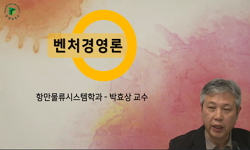Majority of researchers agrees that the crudeness of lithic tools is influenced by the coarseness and mechanical poorness of locally available raw material. In particular, the quartz and quartzite are main candidates to inevitably produce simple tools...
http://chineseinput.net/에서 pinyin(병음)방식으로 중국어를 변환할 수 있습니다.
변환된 중국어를 복사하여 사용하시면 됩니다.
- 中文 을 입력하시려면 zhongwen을 입력하시고 space를누르시면됩니다.
- 北京 을 입력하시려면 beijing을 입력하시고 space를 누르시면 됩니다.

한국 구석기시대 석영계 석재의 기계적 성질 비교 시론 - 임진-한탄강 유역을 중심으로 = A Preliminary Approach to the Mechanical Properties of Korean Palaeolithic Raw Material : comparative analysis of quartzite from the Imjin-Hantan River Area with European high-quality raw materials.
한글로보기https://www.riss.kr/link?id=A104202841
-
저자
유용욱 (충남대학교)
- 발행기관
- 학술지명
- 권호사항
-
발행연도
2012
-
작성언어
Korean
-
주제어
석영계 석재 ; 조질석재 ; 양질석재 ; 탄성계수 ; 인장강도 ; 등방성 ; 효용성 ; quartz and quartzite ; low quality raw material ; high quality raw material ; elasticity ; tensile strength ; isotrophy ; feasibility
-
등재정보
KCI등재
-
자료형태
학술저널
-
수록면
3-37(35쪽)
-
KCI 피인용횟수
11
- 제공처
-
0
상세조회 -
0
다운로드
부가정보
다국어 초록 (Multilingual Abstract)
Majority of researchers agrees that the crudeness of lithic tools is influenced by the coarseness and mechanical poorness of locally available raw material. In particular, the quartz and quartzite are main candidates to inevitably produce simple tools and have been entitled poor quality raw material category. However, we do not have any solid evidence to support that these two rocks are really “hard-to-deal” resource. In order to furnish a reliable background to classify excellent and poor quality raw material, a comparison of mechanical properties between so-called “high-quality” raw material—flint and chert—and quartz/quartzite rocks from the Imjin-Hantan River Area, Korea was made. The flint and chert were obtained from well-known classic palaeolithic sites of Europe: St. Acheul and the vicinity of the Somme River, Les Eyzies and the vicinity of the Vezere River, Atapuerca of Spain, Ust Kara-gol of Altai. The indices measured for quantifying mechanical properties include 1) tensile strength, 2) isotrophy, 3) Young’s modulus and 4) wave velocity. The preliminary result is that any significant difference is hardly identified in these indices; the intra-variability of flint-chert group is larger than inter-group variability and the quartz/quartzite group does not show any clear mechanical inferiority in terms of those four indices above. This result introduces a new hypothesis that the physical constraints imposed on the crude nature of the IHRA implements should be pursued other than sheer mechanical indices of quartz and quartzite.
국문 초록 (Abstract)
일반적으로 한국의 석영계 석재는 조질 석재(low-quality material)로 이해되고 있지만 이러한 석영계 석재가 과연 어느 만큼이나 열악한 특징을 가지고 있는지 구체적인 정량화 작업을 통해서 양...
일반적으로 한국의 석영계 석재는 조질 석재(low-quality material)로 이해되고 있지만 이러한 석영계 석재가 과연 어느 만큼이나 열악한 특징을 가지고 있는지 구체적인 정량화 작업을 통해서 양질 석재(high-quality material)와 비교된 예는 없다. 본 고는 기계적 성질면에서 뚜렷하게 우월한 성격을 지니는 유럽의 양질 석재와 한국 임진-한탄강 유역의 조질 석재를 비교하였다. 널리 알려진 유럽의 구석기 유적들-생 타슐 유적을 비롯한 프랑스의 솜므강 유역, 베제르 강 일대의 프랑스 도르도뉴 지역, 스페인 아타푸에르카 유적, 러시아 알타이 지역의 카라-봄 유적 일대에서 채취한 플린트 및 기타 석재들의 다양한 기계적 성질을 측정하고 이를 임진-한탄강 유역의 규암제 석재와 동일한 조건에서 비교ㆍ분석하였다. 분석 결과, 실험실에서 다양한 변수들을 통합하는 주성분분석법을 통해서 양질/중간질/조질 석재는 통계적으로 의미 있는 수준에서 구분이 가능하였다. 그리고 이러한 석재의 질적 구분에는 탄성요인과 인장요인이라는 변수가 크게 작용한다는 것을 알 수 있었다. 이러한 탄성요인과 인장요인은 각각 '타격감'과 '견고함'이라고 정의될 수 있는 고인류가 감각적으로 인지하는 주관적 속성과 관련이 있다고 생각할 수 있다. 따라서 통상적으로 조질/양질이라는 이분법적인 석재의 구분은 어디까지나 고인류의 석재 구분과는 무관한 주관적인 구분일 가능성이 높으며, 석재의 질적 속성은 기계적 성질 및 해당 석재가 지니는 각종 맥락적 효용성까지 포괄할 때 의미를 지닌다는 것을 알 수 있다.
참고문헌 (Reference)
1 최승엽, "화대리 구석기유적의 슴베찌르개 돌감 연구" 인문과학연구소 (22) : 223-244, 2009
2 김경진, "한국 석영계 석기 쓴자국 분석 방법 시론" 한국문화재조사연구기관협회 (13) : 25-56, 2012
3 김재근, "재료시험법" 원창출판사 2009
4 유용욱, "석영계 석기의 재고찰: 평창리 유적의 예, In 전곡리 유적의 지질학적 형성 과정과 동아시아 구서기" 연천군·한양대학교 문화재연구소 55-87, 2003
5 Marwick, B., "What attributes are important for the measurement of assemblage reduction intensity? Results from an experimental stone artifact assemblage with relevance to the Hoabinhian of mainland Southeast Asia" 35 : 1189-1200, 2008
6 Kooyman, B, "Understanding Stone Tools and Archaeological Sites" University of New Mexico Press 2000
7 Eren, M. I., "Toolstone constraints on knapping skill: Levallois reduction with two different raw materials" 38 : 2731-2739, 2011
8 Rezek, Z, "The relative effects of core surface morphology on flake shape and other attributes" 38 : 1346-1359,
9 Goodman, M. E, "The physical properties of stone tools materials" 9 : 415-433, 1944
10 Delgado-Raack, S., "The mechanical properties of macrolithic artifacts: a methodological background for functional analysis" 36 : 1823-1831, 2009
1 최승엽, "화대리 구석기유적의 슴베찌르개 돌감 연구" 인문과학연구소 (22) : 223-244, 2009
2 김경진, "한국 석영계 석기 쓴자국 분석 방법 시론" 한국문화재조사연구기관협회 (13) : 25-56, 2012
3 김재근, "재료시험법" 원창출판사 2009
4 유용욱, "석영계 석기의 재고찰: 평창리 유적의 예, In 전곡리 유적의 지질학적 형성 과정과 동아시아 구서기" 연천군·한양대학교 문화재연구소 55-87, 2003
5 Marwick, B., "What attributes are important for the measurement of assemblage reduction intensity? Results from an experimental stone artifact assemblage with relevance to the Hoabinhian of mainland Southeast Asia" 35 : 1189-1200, 2008
6 Kooyman, B, "Understanding Stone Tools and Archaeological Sites" University of New Mexico Press 2000
7 Eren, M. I., "Toolstone constraints on knapping skill: Levallois reduction with two different raw materials" 38 : 2731-2739, 2011
8 Rezek, Z, "The relative effects of core surface morphology on flake shape and other attributes" 38 : 1346-1359,
9 Goodman, M. E, "The physical properties of stone tools materials" 9 : 415-433, 1944
10 Delgado-Raack, S., "The mechanical properties of macrolithic artifacts: a methodological background for functional analysis" 36 : 1823-1831, 2009
11 Sharon, G., "The impact of raw material on Acheulian large flake production" 35 : 1329-1344, 2008
12 Carbonell, E., "The TD6 level lithic industry from Gran Dolina, Atapuerca (Burgos, Spain): production and use" 37 : 653-693, 1999
13 Speth, J, "The Mechanical Basis of Percussion Flaking" 37 : 415-433, 1972
14 Inizan, M. -L, "Technology of Knapped Stone" CREP 1992
15 Dibble, H. L., "Raw-material variation in Levallois flake manufacture" 26 : 391-393, 1985
16 Braun, D. R., "Raw material quality and Oldowan hominin toolstone preferences: evidence from Kanjera South, Kenya" 36 : 1605-1614, 2009
17 Brantingham, P. J., "Raw Material Quality and Prepared Core Technologies in Northeast Asia" 27 : 255-271, 2000
18 Hutchings, W. K., "Quantification of Fracture Propagation Velocity Employing a Sample of Clovis Channel Flakes" 26 : 1437-1447, 1999
19 Wilson, L., "Petrography of the Lower Palaeolithic tool assemblage of the Caune de l Arago(France)" 19 (19): 376-387, 1988
20 Costa, L. J., "Non-Flint Raw Material Use in Prehistory: Old prejudices and new directions, In BAR International Series 1939" Archeopress 2009
21 Dibble, H. L, "New experimental evidence on the relation between percussion flaking flake variation" 6 : 283-296, 1981
22 Eren, M. J, "Middle Palaeolithic skill-level and the individual knapper: an experiment" 76 : 229-251, 2011
23 Cotterell, B, "Mechanics of Pre-industrial Technology" Cambridge University Press 1992
24 Andrefsky, W. Jr., "Lithics-Macroscopic Approaches to Analysis" Cambridge University Press 1998
25 Lerner, H., "Lithic raw material physical properties and use-wear accrual" 34 : 711-722, 2007
26 Dibble, H. L, "Introducing a new experimental design for controlled studies of flake formation: results for exterior platform angle, platform depth, angle of blow, velocity, and force" 36 : 1945-1954, 2009
27 Tallavaara, M., "How flakes shatter: a critical evaluation of quartz fracture analysis" 37 : 2442-2448, 2010
28 Debenath, A., "Handbook of Paleolithic Typology" University Museum of University of Pennsylvania 1994
29 Tsirk, A, "Fracture markings from flake splitting" 37 : 2061-2065, 2010
30 Whittaker, J. C., "Flintknapping- Making and Understanding Stone Tools" University of Texas Press 1994
31 Hayden, B, "Evaluating lithic strategies and design criteria, In Stone Tools: Theoretical Insights into Human Prehistory" Plenum Press 9-49, 1996
32 Jones, P. R, "Effects of raw material on biface manufacture" 204 : 835-836, 1979
33 Delagnes, "Diversity of lithic production systems during the Middle Paleolithic in France, In Transitions before the Transition" Springer Press 85-107, 2005
34 민덕기, "Brazilian시험을 이용한 일축압축강도와 탄성계수의 추정(Ⅱ)" 한국지반공학회 25 (25): 65-76, 2009
35 민덕기, "Brazilian 시험을 이용한 일축압축강도, 탄성계수의 추정(I)" 24 : 131-146, 2008
36 Yoo, Y., "Beyond the Movius Line: Hominin occupation and technological evolution in the Imjin-Hantan River Area, Korea. Bar International Series 1772" Hadrian Books 2008
37 Luedke, B. E, "An archaeologist s guide to chert and flint"
동일학술지(권/호) 다른 논문
-
동아시아 태평양 연안일대의 후기구석기시대 말기 다박리면대각선새기개 연구
- 한국구석기학회
- 이헌종
- 2012
- KCI등재
-
- 한국구석기학회
- 이한용
- 2012
- KCI등재
-
Korean Paleolithic Archaeology Today; a new perspective for 21st century
- 한국구석기학회
- Kidong Bae
- 2012
- KCI등재
-
- 한국구석기학회
- 이정철(Lee Jungchul)
- 2012
- KCI등재
분석정보
인용정보 인용지수 설명보기
학술지 이력
| 연월일 | 이력구분 | 이력상세 | 등재구분 |
|---|---|---|---|
| 2027 | 평가예정 | 재인증평가 신청대상 (재인증) | |
| 2021-01-01 | 평가 | 등재학술지 유지 (재인증) |  |
| 2018-01-01 | 평가 | 등재학술지 유지 (등재유지) |  |
| 2015-01-01 | 평가 | 등재학술지 유지 (등재유지) |  |
| 2011-01-01 | 평가 | 등재학술지 선정 (등재후보2차) |  |
| 2010-01-01 | 평가 | 등재후보 1차 PASS (등재후보1차) |  |
| 2008-01-01 | 평가 | 등재후보학술지 선정 (신규평가) |  |
학술지 인용정보
| 기준연도 | WOS-KCI 통합IF(2년) | KCIF(2년) | KCIF(3년) |
|---|---|---|---|
| 2016 | 1.22 | 1.22 | 1.04 |
| KCIF(4년) | KCIF(5년) | 중심성지수(3년) | 즉시성지수 |
| 1.14 | 1 | 1.711 | 0.14 |




 스콜라
스콜라






